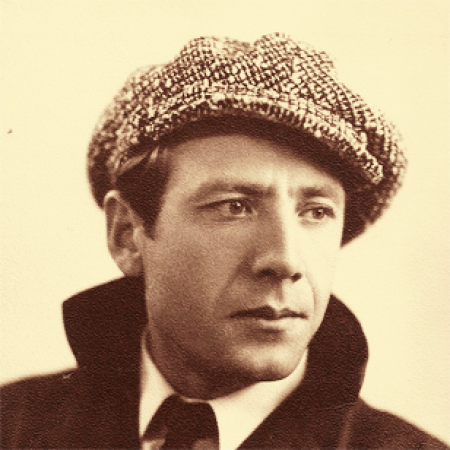Բուն անունով՝ Փրանկիսկոս Թաշճեան, ապագայ հայագէտը ծնած է Կարին (Էրզրում) նահանգի Արծաթի գիւղը, 5 Հոկտեմբեր, 1866ին։ Տարրական ուսումը Կարնոյ ծխական դպրոցը ստանալէ ետք, 1880ին ծնողքը զինք ղրկած է Վիեննայի Մխիթարեան ընծայարանը։ 1883ին ուխտ ըրած է իբրեւ նորընծայ՝ Յակովբոս անունը առնելով, իսկ 1885ին միաբանութեան անդամակցած է։ 1889ին ուսումը աւարտելով, քահանայական ձեռնադրութիւնը ստացած է եւ կարգուած՝ փիլիսոփայութեան եւ հայոց լեզուի ուսուցիչ վանքի կրթարանին մէջ։ Իր առաջին գործերը «Թաշճեան» ստորագրելէ ետք, 1891ին Տաշեան հայեցի մականունը որդեգրած է։
Սորվելու երկաթեայ կամքով օժտուած, Հ. Յակովբոս Տաշեան հայ լեզուի, պատմութեան, աշխարհագրութեան ու գրականութեան համապարփակ գիտութեան տիրացած է, ինչպէս նաեւ՝ տասնեակ մը հին եւ նոր լեզուներու։ Ինչպէս իր կրտսեր պաշտօնակիցը՝ Հ. Ներսէս Ակինեան գրած է, «չյաճախեց բարձրագոյն դպրոցներ, բայց մոգեց իր հմտութիւնը համալսարանական ուսուցիչներ եւ ուսուցչապետներ»։
1893-1909 ին այցելած է Վենետիկ, Պերլին, Կ. Պոլիս, Զմիւռնիա եւ Կարին՝ գիտական առաքելութեամբ։ 1909-1912ին Պոլսոյ Մխիթարեան վանատան մեծաւոր կարգուած է։ Վիեննա վերադառնալով 1912ին, միաբանութեան Վարչական Ժողովի անդամ եղած է։
Տաշեան 25 տարեկանին հրատարակած է Վիեննայի արքայական գրադարանի հայկական ձեռագիրներու ցուցակը, որուն հետեւած է Վիեննայի Մխիթարեան միաբանութեան ցուցակը (1895), զոր կազմած է երկու տարուան մէջ, ընդգրկելով 573 ձեռագրեր՝ հանրագիտարանային բնոյթի տեղեկութիւններով իւրաքանչիւր միաւորի մասին։ Անոր ցուցակագրութեան եղանակը «Տաշեան ոճ» անունով՝ ծանօթ դարձած է հայ բանասիրութեան մէջ։
1897ին ամբողջացուցած ու հրատարակութեան պատրաստած է Հ. Յովսէփ Գաթրճեանէն անտիպ մնացած հայկական Պատարագամատոյցը՝ համեմատութեամբ յունական, ասորական եւ լատինական պատարագներու հետ։
Այնուհետեւ, տասնամեակներ առաջ գրուած ու անտիպ մնացած ուրիշ գործի մը հրատարակութիւնը յանձն առած է՝ Հ. Քերովբէ Սպէնեանի «Ուսումն դասական հայերէն լեզուի»։ Այս նպատակով, ինքզինք նետած է հայ ժողովուրդի ծագման եւ անոր յարակից բազմաթիւ պատմական ու լեզուական խնդիրներու ուսումնասիրութեան մէջ։ Այսպիսով, 700 էջնոց մեծածաւալ հատորը լոյս տեսած է 1920ին՝ երկու տասնամեակներու աշխատանքէ ետք, որուն հետեւած է յետմահու տպուած շարունակութիւն մը՝ «Հաթեր եւ ուրարտեանք» (1934)։
Հ. Տաշեան անխոնջ հետազօտող էր, հրատարակելով Ագաթանգեղոսի (1891), Սուտ-Կալիսթենէի «Վարք Աղեքսանդրի»ի (1892), հայկական հնագրութեան (1898), հայ մատենագրութեան վաղ դարերու հեղինակներու (1898 եւ 1901) եւ բազմաթիւ այլ նիւթերու մասին հատորներ։ Հայերէնի թարգմանած է ականաւոր հայագէտներու գործեր, որոնց շարքին՝ Հայնրիխ Հիւպշմանի, Հայնրիխ Պետերմանի, Փօլ Ֆեթթէրի, Ֆրիտրիխ Միւլլէրի (գերմաներէնէ), Ֆրետրիք Կոնիբէարի (անգլերէնէ), Նիկողայոս Մառի (ռուսերէնէ), եւ այլոց երկեր։ Ոեւէ հայ կամ ոչ-հայ հայագէտ, որ հայագիտական հարցերու մասին հարցումներ ունէր, պարտաւոր էր դիմել Տաշեանին։
1915 ի եղեռնին պատճառած ցնցումը զինք մղեց ժամանակակից հարցերով զբաղելու։ 1921ին Հ. Տաշեան հրատարակած է գերմանական փաստաթուղթերու հատոր մը՝ հայերէն թարգմանութեամբ («Հայ ազգի տարագրութիւնը գերմանական վաւերագիրներու համեմատ») եւ ժողովրդագրական ուսումնասիրութիւն մը՝ «Հայ բնակչութիւնը Սեւ ծովէն մինչեւ Կարին»։ Վերջինս ֆրանսերէն թարգմանութեամբ լոյս տեսած է 1922ին։
Այս բեղուն հայագէտը վախճանած է 3 Փետրուար 1933ին, 66 տարեկանին։ Մահէն տասնհինգ տարի ետք, Մխիթարեան միաբանութիւնը հրատարակած է անոր անտիպ մնացած եւս մէկ գործ՝ «Հին Հայաստանի արեւմտեան սահմանը» (1948)։


